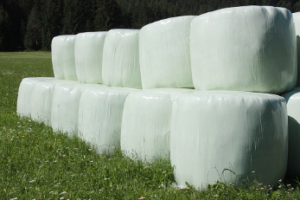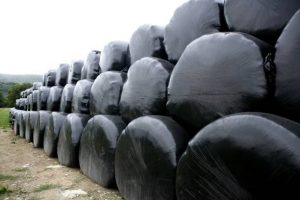Posts in Category: Farming
Sustainable Alternatives to Baling Twine
Baling twine is an indispensable tool for farmers, yet its use poses risks to livestock and humans alike. Choking hazards exist, as well as digestive issues. Utilising sustainable alternatives may help limit its negative impact.
SilageWrap baling twine comprises various materials such as cotton, hemp and jute; some types may be food-grade safe for an oven, while others aren’t.
It is used in hay balers.
 Baling twine is used in hay balers to tie together farm material into bales. This process resembles using baling wire to tie boxcars together but requires more specialised equipment.
Baling twine is used in hay balers to tie together farm material into bales. This process resembles using baling wire to tie boxcars together but requires more specialised equipment.
Modern farmers have increasingly turned to synthetic baler twine as a time and labour saver, using polypropylene or other artificial plastics such as PVC that is treated against rot, mildew and rodents for enhanced resistance. Available online in different colours and lengths.
When purchasing SilageWrap baling twine, make sure to verify its tensile strength. This measurement indicates how much weight (in Kilogram Force) one unknotted piece can support without breaking. Knowing this number enables accurate calculations.
Since automatic reaper machines were first invented, a need for some mechanism to secure bundles of hay and straw bundles has become apparent. An iron chain binding device required considerable labour by workers riding alongside reapers – as an alternative, this was quickly replaced by machines that tied bundles using twine. As time progressed, it was determined that synthetic materials like polypropylene were stronger and better suited for large bales than sisal fibres.
It is used in a variety of applications.
Baling twine is a synthetic cord used to secure bales of hay or straw together. Often treated to resist rot, mildew and rodent infestation, baler twine also replaces metal fence wire by making movement safer for livestock grazing nearby. There is a variety of colours and strengths available that suit specific applications.
Farmers rely on baling twine to bind hay and other materials into round or square bales for storage, either manually or using machines called balers. Most baler twine comprises natural materials like sisal; however, modern balers may be equipped with artificial fibres like manetenvas.
SilageWrap baling twine can serve a multitude of household applications beyond agriculture. For instance, it can be woven into decorative baskets for potted plants, secure tarps, repair broken items, and make dog leashes. Baling twine is also an indispensable item in horse barns where emergency repairs or checks may arise, so having some handy can save time in emergency repairs and checks.
It is used to make a wall hanging.
Picking out the appropriate baling twine colour is vitally important to identify what type of bale you have easily and for productivity purposes and cost-per-bale goals. Many major baler manufacturers provide colour-coded systems to make this easier.
Baling twine has numerous applications in the garden, home, and craft projects. You can weave it to create a trellis for climbing vegetables like beans. Or use it to construct a hammock or seat on old wooden chairs – even make yourself a clothesline out of it!
An innovative and enjoyable way of recycling baling twine is winding it into balls each week – this saves money while helping the environment and creates a unique collector’s item!
It is used to tie up jolly balls.
Farmers often turn to baling twine as an economical and flexible means for tying jolly balls together, yet many are surprised at just how versatile the material can be. It can be used as an economical means to secure crops such as beans and other climbing vegetables, and it can even be transformed into mesh fences or trellises that allow sunlight in. Hammocks or chairs woven from it may even make great uses. Some artists even create baling twine art.
Types of Bale Wrappers
A bale wrapper is a farm implement used to wrap bales in plastic for silage. It is also a great way to store hay. Bale wrappers also store other types of farm products, like grains. There are several types of silage wrappers available on the market. You will want to know which one is right for your farm before you start using one. Here are some of the types available.
Seven
 There are many types of silage wrap, so choosing the right one is important for your application. This film is a barrier against oxygen and CO2 and must have a tight seal. It can be found in two widths (twenty and thirty inches) and several lengths. Triple-layer types also provide superior air and water-tightness and are compatible with all high-performance wrappers.
There are many types of silage wrap, so choosing the right one is important for your application. This film is a barrier against oxygen and CO2 and must have a tight seal. It can be found in two widths (twenty and thirty inches) and several lengths. Triple-layer types also provide superior air and water-tightness and are compatible with all high-performance wrappers.
Depending on the type of crop and the conditions surrounding the crop, the type of silage wrap will affect the fermentation process. There are seven different types, each with a different purpose. Ideally, alfalfa and grasses should be harvested at an early bloom or boot stage to maximise digestible dry matter. There are also seven types of wraps for corn silage. For best results, use a combination of all seven types. Buy quality silage wrap at www.netwrap.com.au/silage-wrap-australia/ now!
Volac
Volac silage wrap can be used to wrap large bales of grass hay. Studies conducted at Writtle College in England and SAC Crichton Royal in Dumfries have found that Volac silage wrap can have an equal or better fermentation rate than standard film. The research included the same number of layers of Volac Topwrap 2000 and the classic film. The forages were then analysed for fermentation and nutrition.
Among the benefits of Volac silage wrap are its uniform thickness, excellent tack and durability. These features contribute to its superior protection against extreme weather and can guarantee the highest quality winter forage. Volac Topwrap comes in 750 mm wide and 1500 m long rolls with a waxed cardboard core. The product is available from Volac International distributors in the UK.
Tytan
The dimensional stability and superior tear and puncture resistance of Tytan Silage Wrap provide consistent performance in any climate. It is the perfect choice for indoor and outdoor applications and is available in two rolls. This wrap is designed for the long-term storage of hay. This product is available in two rolls: one is suitable for smaller bales, and the other is ideal for larger bales. It is a good choice for storing hay for several months. Buy quality silage wrap at www.netwrap.com.au/silage-wrap-australia/ now!
The Tytan Silage Wrap is available in 30″ width and 5,000 feet. It has superior tear resistance, excellent cling to airtight bales, and extra strength. It is a durable and flexible material that is ideal for all climates. It is easy to use and maintain and is available in many colours. It is also available with a lifetime guarantee. It is also very affordable. It is available in various colours, sizes, and lengths.
EconoFlex 5
The new EconoFlex 5 silage wrap film is an environmentally friendly and highly effective option for wrapping your bales. This film is made of high-quality polyethylene and offers high tear and puncture resistance and good cling to keep your bales airtight. It is also highly durable and offers consistent performance in various climates. The following are some of its benefits:
The EconoFlex 5 silage film is manufactured using modern processes and is UV protected. It is ideal for round and square bales and has impressive tear resistance. Its durability means that it can be reused for several years. It also offers excellent mechanical and elasticity properties. So, it is perfect for a variety of applications. And because it is UV-resistant, it is an environmentally friendly alternative to coloured film.
Eco Ultra
Eco Ultra (r) is designed for high-performance silage bales wrapping, with superior tear and impact resistance. It is available in black, white, and green and is 20% more efficient than conventional five-layer films. It also minimises tearing during the pre-stretch process. The film also enables tight-packing of bales for up to one year. This product is suitable for all silage-producing sectors.
The material is available in different types and sizes. It offers superior UV protection, reduces spoilage, and prevents oxygen penetration. Its white and green colours provide a seventy-five per cent stretch factor on round bales. It is free of chemicals and has a natural coating that prevents soil from eroding. It also protects the foliage from insects. In addition, its eco-friendly properties allow for lower disposal costs.
Amplast 7
Compared to the Amplast 6 and Amplast 5 layers, the Amplast 7 silage wrap has improved mechanical properties and is more puncture resistant. It is air and rainproof and has better opacity. It is also more resistant to UV rays. It contains 40 rolls per pallet and offers better puncture resistance. Its durability and puncture resistance make it ideal for square bales. It also resists cracking and tearing during the pre-stretch process. Buy quality silage wrap at www.netwrap.com.au/silage-wrap-australia/ now!
